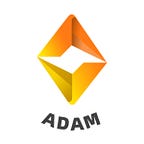ADAM Data Encryption Computing Network Creates “Zero Cost of Trust” on-Chain Application
When blockchain technology emerged, it was praised for solving the pain point of “trust”. As long as there is enough trust between people, social and economic activities can be carried out more efficiently. Once people discover that their perceptions of how society works are not the truth, cracks in trust appear and inevitably lead to greater disagreements. People will also eventually demand a complete change of the entire operating mechanism.
We know that the “trust input” of the blockchain is largely performed by oracle. The oracle connects the real world with the blockchain system and ensure that the smart contract is strictly executed according to the agreement through encryption. However, the oracle is still at risk of “Sybil Attack”. As ADAM continues to work on on-chain data, a “zero cost of trust” on-chain application is gradually being developed.
In the current society, there are deviations between the actual relationship between users and institutions and users’ cognition, such as people’s perception of legal responsibilities in contracts, and there are deviations between the institutions’ external claims and the actual situation. It is with blockchain and oracle technology that this widespread deviation is possible to eliminate.
ADAM creates a new standard of “zero cost of trust” for the society
Before understanding the concept of “cost of trust”, it is necessary to define what is meant by “trustworthy”, “trustless” and “zero cost of trust”, and how these three concepts are related to each other.
The state of “trustworthy” means that a person is very confident that he or she, other people or external things are right. For example, people can carry out social activities in an orderly manner, which shows that he believes that his safety can be guaranteed. Because he believes that his self-defense ability is high enough, he believes that the mental state of other people is normal, and he believes that the cost of crime is high enough to dispel the bad guys’ desire to commit crimes. But trust is, after all, a subjective belief. That means everyone trusts everything differently. And in fact in most cases trust is not 100 per cent and trust does not mean right.
“Trustless” means ensuring that something will happen exactly as planned, for example, order of nature, the law that have been repeatedly verified, or some sophisticated mechanisms guarantee that something will happen that way. Trustlessness also usually implies a very high degree of certainty.
“zero cost of trust” refers to the objective certainty that the level of trust in a certain hypothesis conforms to a certain result. It is important to note here that a person’s perception of something is limited by the range of information available to them. This is crucial to the way in which the zero cost of trust is extended, because it is impossible to know objective facts about something if some information about it is unknown or deliberately hidden.
If a person’s level of trust in something is higher than the level of objective evidence that is known, we usually assume that the person is gullible, that they may have been misled, or that they are just hoping that things will change later. When a person’s level of trust in an event is lower than the level of objective evidence, then we usually assume that the person is very suspicious or does not know the truth.
Individual and social cognition must be matched with objective facts, and the level of trust must be raised as much as possible. This allows people to make rational decisions and better understand the logic behind the results, and bring expectations closer to zero cost of trust, reducing speculation and social divisions.
ADAM’s “zero cost of trust” is achieved by controlling all variables through specialised techniques, and to control, incentivise or significantly reduce the impact of these variables, thus making the process more predictable, and minimizing the cost of trust.
The emergence of blockchain and oracle provides users with an innovative infrastructure to build the next generation of trust-minimised applications and services. On the basis of blockchain and oracle technology, the data encryption computing network ADAM further reduces the trust cost of on-chain applications.
ADAM achieves consensus in a distributed network by combining encryption technology and decentralised consensus to create a unified record and perform calculations for applications in a deterministic manner. In general, ADAM executes codes in a deterministic manner, and stores calculation results in distributed ledgers in a non-tamperable manner, so as to maximize the efficiency, security and accuracy of data applications on the chain.
